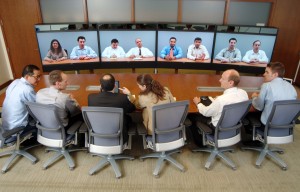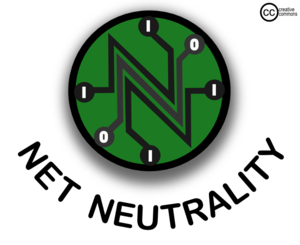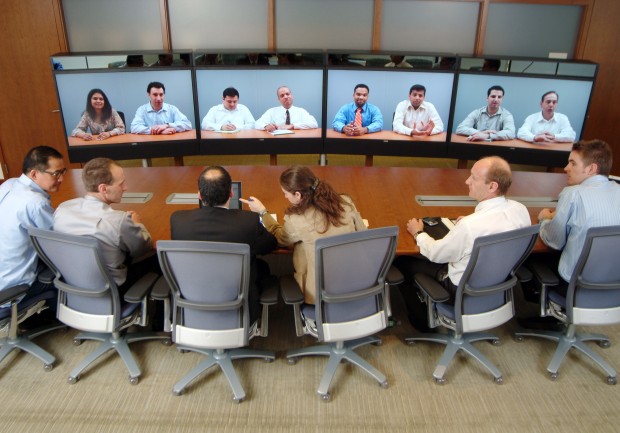 Here we are less than two weeks away from the biggest AV trade show of the year in the United States kicking off in sun drenched Las Vegas. Every day my feeds are filled with articles from another AV Pro telling me about what they are eagerly anticipating at the show this year. My inbox is jammed with manufacturer’s announcements teasing their new product releases to ensure I drop by their booth. I see podcasts and webcasts reaching out for ears and eyes trying to get people excited for what is lingering on the ever closer horizon. Yet, with all this noise I feel like we’re missing something.
Here we are less than two weeks away from the biggest AV trade show of the year in the United States kicking off in sun drenched Las Vegas. Every day my feeds are filled with articles from another AV Pro telling me about what they are eagerly anticipating at the show this year. My inbox is jammed with manufacturer’s announcements teasing their new product releases to ensure I drop by their booth. I see podcasts and webcasts reaching out for ears and eyes trying to get people excited for what is lingering on the ever closer horizon. Yet, with all this noise I feel like we’re missing something.
There are a few detractors out there that are looking ahead with some trepidation regarding what’s coming, but for the most part I’m seeing a lot of people talking with rose colored glasses. Just like last year I’m hearing excitement about the next round of 4K displays and the potential decrease in price. The crawl toward unification between AV and IT continues with classes, seminars, and product releases. And the question on many people’s minds: what is Microsoft going to bring to their first InfoComm show?
Collectively the focus is turning inward on what the next big thing will be that changes our experience as AV professionals and it’s as though the AV industry is putting its blinders on to the other things that impact our industry. But why is that? This could potentially be the largest gathering of AV pros in the world (ISE hit 51,003 in February just this year), so why is the topic of conversation all about us? Where are the discussions taking place that show how involved we are with the ancillary industries?
Three years ago, while working as the training manager for a manufacturer, I hosted a training course on Mass Notification System Design. This was one year after the changes in intelligibility requirements to NFPA 72 2010 code permeated the AV industry. That year I heard a few manufacturers discussing the impact this could have on integrators interested in pursuing the life safety market, as well as an attempt to push through the opportunity that had been created, but very little else. Since then, the topic has continued to be largely ignored by the industry at large.
This year we are in the midst of one of the biggest decisions our country has faced in nearly 70 years regarding equal rights and communication. Yet, I look at the schedule and there isn’t one seminar or panel discussing Net Neutrality and the impact that the current rules the FCC has put out for public comment. How is this possible?! InfoComm, from a manufacturer’s standpoint, can be a three to six month (or more) planning process. But for those working for InfoComm International it is a year long planning process of long hours trying to get as much out of a one week period as humanly possible. I understand that there was no way to anticipate this issue being something that needs discussion when plans were being laid out, but now that it is here, it is truly something that cannot be ignored.
 For years InfoComm and the AV industry have been preaching an IT convergence that would put so much of our signal transmission on the networks of our customers. InfoComm has emphasized unified communication for years and showed just how important it is and how far it has come by creating the Unified Communications Pavilion at InfoComm; a technology pavilion completely centered on the idea of being able to easily communicate for personal and professional means across the internet. Those in the audio industry talk about AVB, AES67, Ravenna, and Dante being used to transmit signals across the network. While we more commonly associate those signal transports as being local to a single building, that doesn’t mean the applications are limited to just that and expansion would require them to travel across the an ISP infrastructure at some point. Additionally, we cannot forget that one of the biggest pushes behind network connected devices is remote service capabilities for the integrators. Instead of having to drive to the job site, the programmers can log in from their desks, troubleshoot the devices, and push any required updates to the system. All of these will be impacted by the proposed rules of Net Neutrality.
For years InfoComm and the AV industry have been preaching an IT convergence that would put so much of our signal transmission on the networks of our customers. InfoComm has emphasized unified communication for years and showed just how important it is and how far it has come by creating the Unified Communications Pavilion at InfoComm; a technology pavilion completely centered on the idea of being able to easily communicate for personal and professional means across the internet. Those in the audio industry talk about AVB, AES67, Ravenna, and Dante being used to transmit signals across the network. While we more commonly associate those signal transports as being local to a single building, that doesn’t mean the applications are limited to just that and expansion would require them to travel across the an ISP infrastructure at some point. Additionally, we cannot forget that one of the biggest pushes behind network connected devices is remote service capabilities for the integrators. Instead of having to drive to the job site, the programmers can log in from their desks, troubleshoot the devices, and push any required updates to the system. All of these will be impacted by the proposed rules of Net Neutrality.
That may seem like hyperbole because the amount of data that a programmer pushes across the internet to the network connected device is so minimal, or because the bandwidth required to transmit 512 channels of multi-channel audio might not make a blip on the radar of a network administrator, or because of technological advancements like H.265 will allow for improved compression ratios which means a higher quality video to be sent across the internet with less data. But here’s the thing, all of these will be impacted by the rules the FCC has put in place.
If the FCC rules remain, the Internet Service Providers (ISPs) will have the capability of partitioning their existing networks and charging every single company to use the existing network as it is now or, for a higher premium cost, the company will be able to join the “fast lane” and have their data prioritized.
This could drastically impact the AV industry because we have been working to move communication technologies forward by using the internet as a backbone to pass those video and audio signals and now the amount of space available for those signals will decrease, unless of course your company wants to fork over a little more cash. That might just seem like business as usual in a capitalist society, but let’s not forget that just because you paid the premium cost to have your data be treated as high priority by the ISPs, doesn’t mean those you are communicating with were able and willing to add the expense.
This means that no matter how great your video compression technology gets, it can still arrive choppy and with dropouts making it a much less effective way of communicating with your remote customers, employees, and offices. That firmware update you were trying to push to the control processor just got knocked off halfway through because someone decided it was time to binge watch a show on Netflix. That multi-channel audio you were broadcasting between campus buildings just lost a few data packets that redundancy couldn’t accommodate.
Just yesterday a consultant wrote “I’m starting to view HDBaseT as a stop-gap solution to digital transport that will be replaced by a truly IP-based converged solution.” If the net neutrality rules proposed take effect the capabilities of true IP signal convergence will still take place, but how useful will they actually be if those signals ever need to reach beyond the local area network?
 InfoComm 2014 is where the brilliant minds in the AV gather together to learn about new technology, new gear, and discuss the issues we face as an industry. So how is it that Net Neutrality somehow slipped through the cracks? This is a top priority discussion in the IT industry, and if the inevitable convergence of AV and IT is happening, then we need to make their issues our issues.
InfoComm 2014 is where the brilliant minds in the AV gather together to learn about new technology, new gear, and discuss the issues we face as an industry. So how is it that Net Neutrality somehow slipped through the cracks? This is a top priority discussion in the IT industry, and if the inevitable convergence of AV and IT is happening, then we need to make their issues our issues.
To voice your opinion and concerns about Net Neutrality to the FCC during the time of public forum, go to the FCC comments page on the issue: http://www.fcc.gov/comments Protecting and Promoting the Open Internet.



Pingback: Net Neutrality Posts | Sound Reason